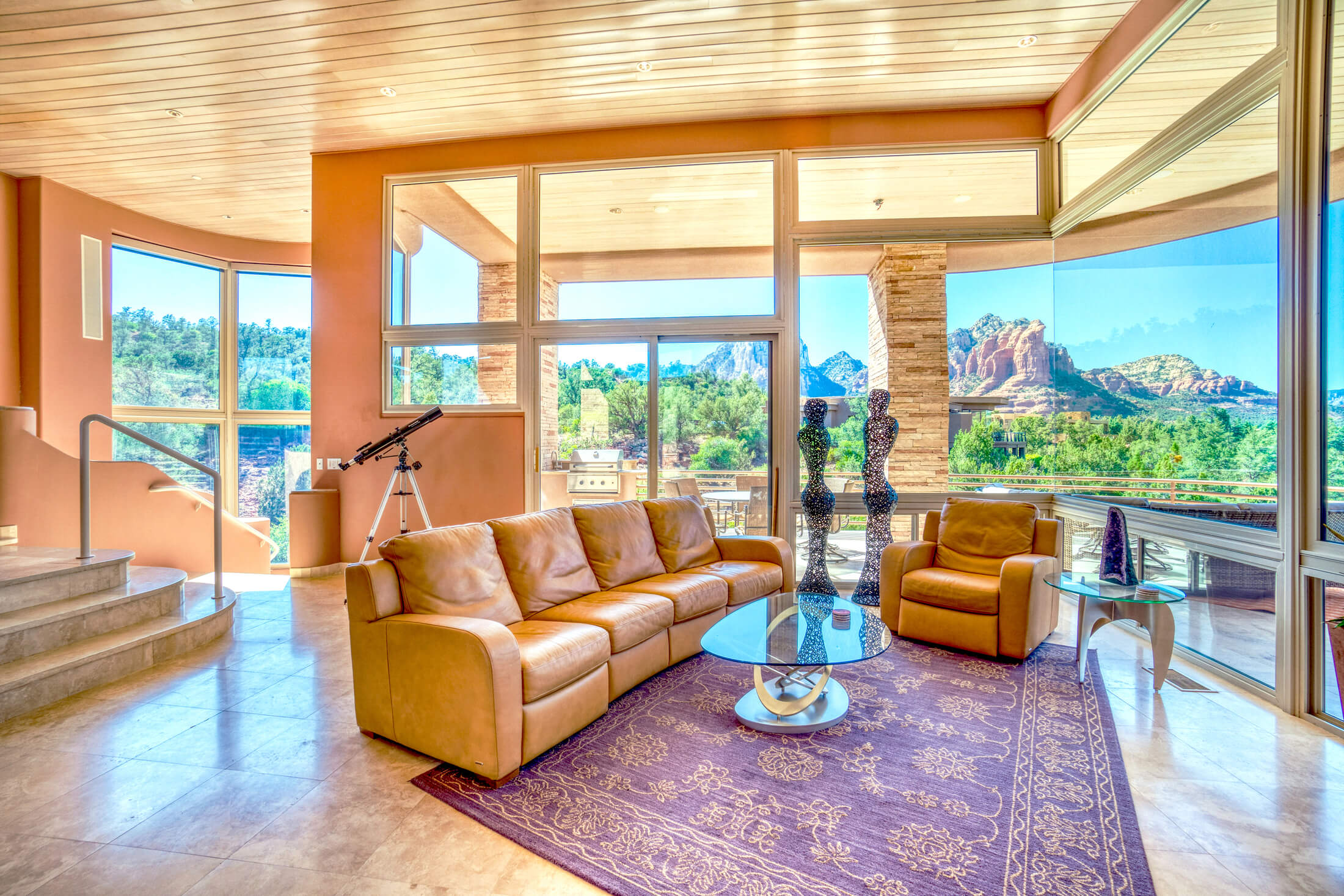What Are Energy Efficient Windows?

A Homeowner’s Guide to Comfort, Savings & Smarter Living
If your energy bills seem higher than they should be, or your home feels drafty despite a cranked-up HVAC system, you’re probably asking the right question: What are energy efficient windows, and do I need them?
The short answer: energy efficient windows are designed to reduce heat transfer, keep your home more comfortable year-round, and cut down on utility costs. But there’s more to them than just double panes and fancy glass.
Let’s break down what makes a window energy efficient, how they work, and how to know if they’re worth the investment for your Arizona home.
What Makes a Window “Energy Efficient”?
Energy efficient windows are built to minimize the amount of heat that enters or escapes your home. This is especially important in climates like Arizona, where keeping the heat out in summer is just as crucial as keeping warmth in during cooler months.
Here are the key components that set them apart:
Multiple Panes of Glass
Double-pane or triple-pane windows have sealed spaces between the glass, often filled with inert gases like argon or krypton. These layers act as insulation against temperature swings.
Low-E Glass Coatings
Low-emissivity (Low-E) coatings are invisible layers of metallic particles that reflect infrared light. This helps keep your indoor temperatures consistent by bouncing heat back inside during winter and blocking it out during summer.
Insulated Frames
Materials like vinyl or fiberglass offer better thermal performance than traditional aluminum. Fiberglass, in particular, performs well in Arizona’s extreme heat thanks to its durability and low thermal expansion.
Gas Fills
Argon and krypton gases are denser than air and fill the spaces between glass panes, reducing heat transfer more effectively than air alone.
Tight Seals & Warm Edge Spacers
High-quality windows come with advanced spacers and seals to reduce air leakage and thermal bridging, especially at the glass edges.
Why Energy Efficient Windows Matter (Especially in Arizona)
In hot, dry regions like Arizona, upgrading to energy efficient windows can drastically reduce cooling costs. Here’s what else they bring to the table:
- Lower utility bills – The Department of Energy estimates savings of up to 13% when replacing old windows with ENERGY STAR® rated models.
- Increased indoor comfort – Say goodbye to hot spots, drafts, or sun-faded furniture.
- Smaller carbon footprint – Using less energy means a greener, more sustainable home.
- Longer HVAC lifespan – Less strain on your system = fewer repairs and replacements.
How to Tell If a Window Is Energy Efficient
Here’s what to look for when shopping or comparing products:
ENERGY STAR® Label
This label means the window meets or exceeds EPA standards for efficiency in your specific climate zone. Learn more at https://www.energystar.gov/
NFRC Rating Label
Issued by the National Fenestration Rating Council, this includes:
- U-Factor – How well the window insulates (lower = better)
- Solar Heat Gain Coefficient (SHGC) – How much solar heat it lets in (lower = better for hot climates)
- Visible Transmittance – How much natural light comes through
- Air Leakage Rating – How much outside air sneaks in (lower = better)
Are Energy Efficient Windows Worth It?
In most cases, yes—especially if your current windows are over 15-20 years old. Here’s why:
- The average homeowner can save $125 to $465 per year in energy costs depending on their location and existing windows.
- Energy efficient windows can increase resale value and curb appeal.
- You may qualify for federal tax credits (up to $600 in 2025 for window upgrades).
Pro Tip: Check if your state or utility company offers rebates for upgrading to ENERGY STAR windows.
Choosing the Right Windows for Arizona Homes
Arizona’s climate demands performance, especially when it comes to battling intense sun and dry heat. Here’s what we recommend:
- Low-E coatings with a low SHGC to minimize solar gain
- Double-pane with argon gas for insulation without overpaying
- Fiberglass or vinyl frames for long-term durability in high temperatures
- Proper professional installation to prevent air leaks and premature wear
At American Vision Windows, our specialists help you select energy efficient windows tailored to your region, home, and budget—not just a one-size-fits-all solution.
Final Thoughts: Invest in Efficiency, Comfort, and Long-Term Value
So, what are energy efficient windows? They’re more than just glass. They’re a smarter way to improve your home’s comfort, reduce your bills, and support long-term sustainability.
Whether you’re upgrading a few windows or tackling a full home project, investing in high-performance, professionally installed windows is a decision that pays off every season.
Ready to Learn More or Get a Free Quote?
At American Vision Windows, we’ve installed nearly a million windows and helped thousands of homeowners across Arizona enjoy a cooler, quieter, and more energy-efficient home.
Get your free in-home estimate today – and let’s find the perfect energy efficient windows for your space.
FAQs About Energy Efficient Windows
How much do energy efficient windows cost?
On average, expect to pay $400–$1,200 per window depending on style, material, and features. Installation adds $100–$300 per window.
What’s the lifespan of energy efficient windows?
High-quality vinyl or fiberglass windows typically last 20 to 40 years, with minimal maintenance required.
Do energy efficient windows qualify for tax credits?
Yes. In 2025, homeowners can claim up to $600 for ENERGY STAR window upgrades under the federal Energy Efficient Home Improvement Credit.
Can I make existing windows more energy efficient?
Yes. Options include adding Low-E window film, caulking and weatherstripping, or installing storm windows. These upgrades help—though they won’t match the performance of full replacements.

